Audi A1 vs Mercedes Sprinter Transporter – Differences & prices compared
Compare performance, boot space, consumption and price in one view.
Find out now: which car is the better choice for you – Audi A1 or Mercedes Sprinter Transporter?
The Audi A1 (Hatchback) comes with a Petrol engine and Manuel or Automatic transmission. In comparison, the Mercedes Sprinter Transporter (Cargo Van) features a Electric or Diesel engine with Automatic or Manuel transmission.
When it comes to boot capacity, the Audi A1 offers 335 L, while the Mercedes Sprinter Transporter provides – depending on how much space you need. If you’re looking for more power, decide whether the 207 HP of the Audi A1 or the 204 HP of the Mercedes Sprinter Transporter suits your needs better.
In terms of consumption, the values are 5.20 L per 100 km for the Audi A1, and 27.10 kWh7.90 L for the Mercedes Sprinter Transporter.
Price-wise, the Audi A1 starts at 19700 £, while the Mercedes Sprinter Transporter is available from 26900 £. Compare all the details and find out which model fits your lifestyle best!
Audi A1
The Audi A1 captivates with its sleek design and compact dimensions, making it an ideal choice for urban driving. Inside, it boasts a premium interior that reflects Audi's commitment to quality and attention to detail. With a spirited performance and advanced technology, the A1 delivers an engaging driving experience that appeals to both young and discerning drivers alike.
details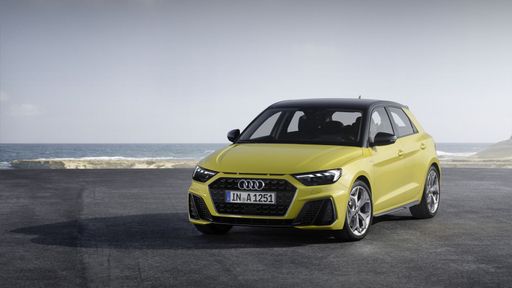 @ audi-mediacenter.com
@ audi-mediacenter.com
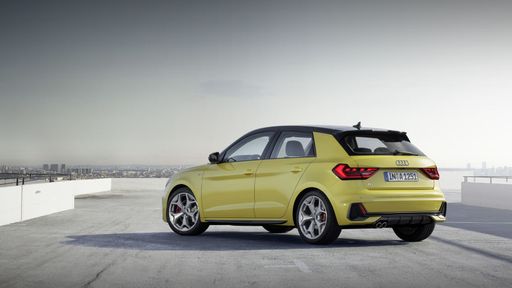 @ audi-mediacenter.com
@ audi-mediacenter.com
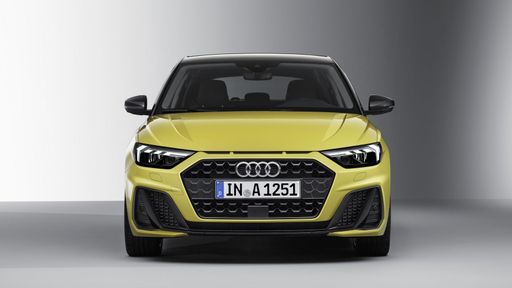 @ audi-mediacenter.com
@ audi-mediacenter.com
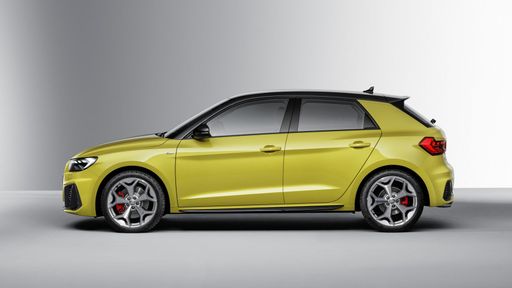 @ audi-mediacenter.com
@ audi-mediacenter.com
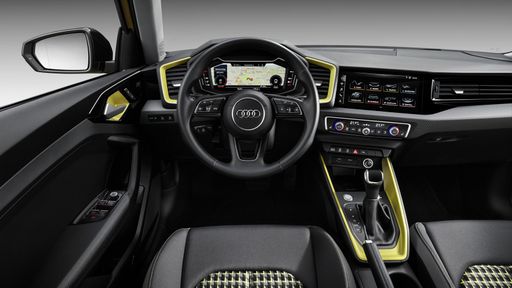 @ audi-mediacenter.com
@ audi-mediacenter.com
 @ audi-mediacenter.com
@ audi-mediacenter.com
Mercedes Sprinter Transporter
The Mercedes-Benz Sprinter Transporter is renowned for its versatility and reliability, making it a popular choice for businesses across various industries. Featuring a spacious and intelligently designed interior, it offers ample cargo space while ensuring comfort for the driver. With a reputation for durability and advanced technology, the Sprinter continues to set standards in the commercial vehicle sector.
details

|
|
|
|
|
Costs and Consumption |
|
|---|---|
|
Price
19700 - 28300 £
|
Price
26900 - 72900 £
|
|
Consumption L/100km
5.2 - 6.4 L
|
Consumption L/100km
7.9 - 12.7 L
|
|
Consumption kWh/100km
-
|
Consumption kWh/100km
27.1 - 31.5 kWh
|
|
Electric Range
-
|
Electric Range
194 - 444 km
|
|
Battery Capacity
-
|
Battery Capacity
56 - 113 kWh
|
|
co2
118 - 146 g/km
|
co2
0 - 333 g/km
|
|
Fuel tank capacity
40 L
|
Fuel tank capacity
71 L
|
Dimensions and Body |
|
|---|---|
|
Body Type
Hatchback
|
Body Type
Cargo Van
|
|
Seats
5
|
Seats
3
|
|
Doors
5
|
Doors
4
|
|
Curb weight
1175 - 1365 kg
|
Curb weight
2052 - 3166 kg
|
|
Trunk capacity
335 L
|
Trunk capacity
-
|
|
Length
4029 - 4046 mm
|
Length
5932 - 7367 mm
|
|
Width
1740 - 1756 mm
|
Width
1993 mm
|
|
Height
1409 - 1459 mm
|
Height
2331 - 2663 mm
|
|
Payload
410 - 470 kg
|
Payload
577 - 2641 kg
|
Engine and Performance |
|
|---|---|
|
Engine Type
Petrol
|
Engine Type
Electric, Diesel
|
|
Transmission
Manuel, Automatic
|
Transmission
Automatic, Manuel
|
|
Transmission Detail
Manual Gearbox, Dual-Clutch Automatic
|
Transmission Detail
Manual Gearbox, Automatic Gearbox
|
|
Drive Type
Front-Wheel Drive
|
Drive Type
Rear-Wheel Drive, All-Wheel Drive
|
|
Power HP
95 - 207 HP
|
Power HP
114 - 204 HP
|
|
Acceleration 0-100km/h
6.5 - 11.5 s
|
Acceleration 0-100km/h
-
|
|
Max Speed
182 - 245 km/h
|
Max Speed
90 km/h
|
|
Torque
175 - 320 Nm
|
Torque
300 - 450 Nm
|
|
Number of Cylinders
3 - 4
|
Number of Cylinders
4
|
|
Power kW
70 - 152 kW
|
Power kW
84 - 150 kW
|
|
Engine capacity
999 - 1984 cm3
|
Engine capacity
1950 cm3
|
General |
|
|---|---|
|
Model Year
2025
|
Model Year
2024 - 2025
|
|
CO2 Efficiency Class
D, E
|
CO2 Efficiency Class
A, G
|
|
Brand
Audi
|
Brand
Mercedes-Benz
|
Audi A1
The Audi A1: A Compact Marvel of Modern Engineering
The Audi A1 has always been a leading figure in the premium compact car segment. As we delve into the latest version, we observe a masterclass in innovation, economic performance, and state-of-the-art technology.
Efficient Performance and Advanced Engineering
The Audi A1 offers an impressive range of petrol engines, designed with efficiency and performance in mind. With power output ranging from 95 to 207 PS, delivered through either a manual or automatic transmission, this compact vehicle offers a responsive and agile driving experience, adept at city commutes or longer motorway journeys.
Fuel efficiency is equally impressive, with consumption figures ranging between 5.3 to 6.5 L/100 km. This efficiency is complemented by the low CO2 emissions, making it an environmentally friendly choice, with CO2 efficiency classes spanning from D to E.
Innovative Design and Cutting-Edge Features
The Audi A1 is not just a vehicle; it’s a statement of style and function. With its athletic lines and a choice of striking new colours, the A1 stands out on the road. The interior is meticulously designed to maximise comfort and usability, including digital displays and the latest infotainment systems that offer seamless connectivity with your devices.
The model year 2024 has brought notable improvements, such as the inclusion of the innovative S tronic dual-clutch transmission, offering smoother and faster gear changes.
A Perfect Balance of Size and Practicality
Despite its compact size, the Audi A1 does not compromise on practicality. With its five-door hatchback design, it offers easy access and a surprising amount of space. The boot provides 335 litres of luggage space, ample for everyday usage and weekend getaways.
The Audi A1 seats five comfortably, and with a variety of trim levels such as the S line and advanced S line, there's a model to fit all tastes and needs.
Safety and Technology Features
Safety remains paramount in the design of the Audi A1. It includes features such as the Audi pre sense front, lane departure warning, and standard airbags that ensure both driver and passenger confidence on every drive.
Technologically, the Audi A1 stands head and shoulders above its competitors, with optional features such as virtual cockpit displays and navigation systems, ensuring each journey is as informed and enjoyable as possible.
Conclusion: The Audi A1 – A Standout Choice
In the competitive scene of compact cars, the Audi A1 remains a standout choice, offering exceptional balance between performance, efficiency, and style. With its advanced technology and thoughtful design, it provides both a driving pleasure and peace of mind on the road.
Mercedes Sprinter Transporter
The Evolution of the Mercedes-Benz Sprinter Transporter
The Mercedes-Benz Sprinter has been a staple in the commercial vehicle sector for decades, known for its reliability, versatility, and impressive load capacity. The latest iterations, including the fully electric eSprinter variants, demonstrate Mercedes-Benz's commitment to innovation and sustainability. These vehicles are designed to meet the needs of various business applications, providing numerous options to cater for all logistical demands.
Electrification and Engine Options
The Mercedes-Benz Sprinter Transporter offers a wide range of engine choices, from traditional diesel engines to state-of-the-art electric powertrains. Diesel options are available in capacities ranging from 114 PS to 190 PS, providing durable performance for long hauls while maintaining decent fuel efficiency, with consumption between 7.9 and 12.7 litres per 100 km. The electric eSprinter, on the other hand, boasts an output of either 136 PS or 204 PS, with a consumption of about 26.3 to 30.7 kWh per 100 km, and offers a range of up to 453 km depending on the battery size.
Technical Specifications and Safety Features
The Sprinter Transporter carries a diverse set of technical options to enhance both functionality and safety. The models are equipped with either manual or automatic transmissions, with choices in rear-wheel drive or all-wheel drive options. The eSprinter highlights innovative features such as regenerative braking and a robust electric motor delivering up to 450 Nm of torque.
On the safety front, the Sprinter includes features such as active distance assist, blind spot assist, and lane-keeping assist to ensure maximum security for drivers and goods alike.
Dimensions and Payload Capabilities
Designed for versatility, the Sprinter Transporter showcases various configurations in terms of dimensions and payload capacities. Lengths range between 5932 mm to 7367 mm, widths settle at 1993 mm, and heights vary from 2331 mm to 2663 mm, accommodating a range of business needs. With a payload capability of up to 2641 kg, the Sprinter is well suited for heavy-duty tasks, offering ample load volume and accessibility.
Inside the eSprinter Experience
Stepping into the eSprinter offers an advanced driving experience, tailored to the demands of modern day logistics. The electric variants include new telematics systems for fleet management, offering remote diagnostics and optimised communication between vehicles and back-office operations. Moreover, features such as a user-friendly cockpit, comfortable seating, and advanced climate control mirror the premium standards of Mercedes-Benz, ensuring drivers enjoy every aspect of their journey.
Conclusion: Mercedes-Benz Sprinter Leads the Charge
The Mercedes-Benz Sprinter remains at the forefront of the commercial vehicle market, offering a blend of power and innovation across its diesel and electric models. With its forward-thinking technology, the eSprinter sets new standards in environmental stewardship without compromising on performance or utility. It is an excellent choice for businesses looking to transition to more sustainable transport solutions while benefiting from the reliability and quality that Mercedes-Benz is known for.
The prices and data displayed are estimates based on German list prices and may vary by country. This information is not legally binding.
